Day 1 – Arrival in Addis Ababa - Capital of Ethiopia
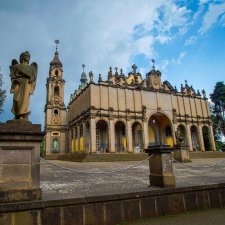
Welcome to Ethiopia! You’ll be stepping off the plane into Africa’s fourth largest city and diplomatic capital, Addis Ababa. Your Yared Tour & Travel guide will be there to meet you at Bole International Airport and drive you to your hotel.
The direct translation of Addis Ababa is ‘new’ ‘flower’ and you are likely to find this rapidly growing city a fascinating place full of contrasts between traditional and modern Ethiopia, making it a great starting point for your tour.
Day 2: City tour Addis Abeba
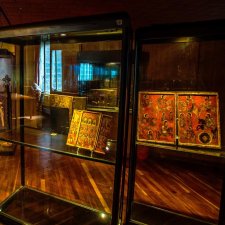
Today begins with a drive to Entoto Mountain where we visit the historical site of Emperor Menelik’s Palace and Maryam church, the oldest in Addis Ababa. From here we drive through Shiro Meda which hosts the city’s largest market for traditional clothing, continuing to the campus of Addis Ababa University, home to one of Africa’s best Ethnological museums and the former palace of Emperor Haile Selassie. You visit the Ethnological or Ethiopia's National Museum with ‘Lucy’, the world-famous fossilized hominid. The museum also showcases ancient artefacts from Axum and Gondar, and an exhibition of Ethiopian art. Then visit the Holy Trinity Cathedral (built in 1933), the largest Orthodox church in Ethiopia and the final resting place of Haile Selassie. To conclude, you will visit the busy life of traders in Mercato - Africa’s biggest outdoor market.
Day 3 – Via Tiya & the Rift Valley to Arba Minch
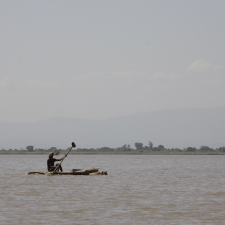
Today you’re heading to the south! It’s a 6-7 hour drive to Arba Minch and we’ll be stopping off along the way to visit Tiya – one of Ethiopia’s most important, and least understood World Heritage stelae fields containing 41 obelisks engraved with interesting symbols thought to be around 600 years old. We arrive in Arba Minch region, meaning ‘forty’ ‘springs’, in the afternoon. The southern city, situated in the Gamo Gofa region is rich in natural resources including two Rift Valley lakes – Chamo and Abaya – home to large populations of hippos and crocodiles, innumerable little springs, Nech Sar (‘white’ ‘grass’) National Park and huge irrigated fruit farms which provide an important source of fruit farms.
Day 4 – Nech Sar & Dorze tribe
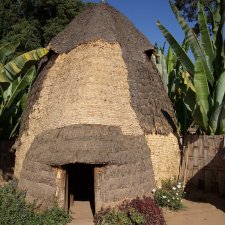
During today’s action-packed excursion, we visit the nearby scenic Nech Sar National Park. From the park’s edge, we take a motorboat on the lake to see hundreds of huge Nile crocodiles bathing in the sun and hippos bobbing in and out of the water. There are also many pelicans and other birds around the lake.
In the afternoon, we drive into the Gamo highlands outside of Arba Minch, to visit an extraordinary mountain community called Dorze. The traditional way of life of the Dorze people is fascinating. The friendly local community invite you into their beautiful villages to view their huts artfully woven from bamboo and thatched with leaves, which look like huge beehives or upturned baskets, followed by visits to the weaving, pottery and tanning cooperatives. You will also enjoy the breath-taking views of the lakes in the valley.
Day 5 - To Turmi - Hamar Region
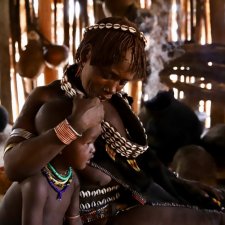
On our way to Turmi we pass through Key Afar, the main town of the Banna tribe. We’ll catch one of the biggest traditional tribal markets which takes place on Thursdays. Groups of Ari, Benna, Tsemay and Hamar people are the main attendees, walking long distances to buy and sell local commodities at the Key Afar market, like tabacco (‘tampo’), coffee husks (‘bunno’) and sorghum (‘asine’). At the catle market men trade cows and goats. As the day progresses, you will also see the popular drink ‘parsee’ – a beloved traditional beer made from fermented sorghum being passed around groups of people in large calabash gourds.
Day 6 - Hamar Tribe Experience
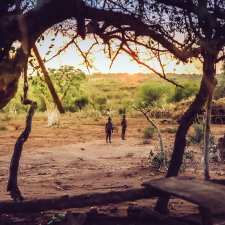
Ancient traditions still form the backbone of daily life in Hamar. Most live in rural settlements and practise traditional livelihoods through subsistence agro-pastoralism. Daily life revolves around taking care of livestock, domestic duties and farming of maize and sorghum. Hamar men are semi-nomadic and travel with large herds of goats and cattle between grazing areas, whereas Hamar women take care of the children, cooking, water and firewood collection. Ceremonies and rituals are an integral part of traditional Hamar life. The most well-known is a rite of passage for men into adulthood and marriage called ‘ukili bula’ or bull-jump. During the ceremony, a young Hamar man leaps naked over several of his family’s bulls. It’s a highlight to witness if there’s one taking place whilst you’re here.
Day 7 - Jinka, Benna Tribe & Market
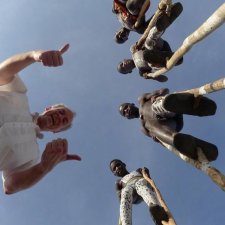
Our next stop is Jinka, a fast-developing market town set in a cradle of green hills above Mago National Park which gives the area a cooler climate compared to the rest of the Lower Omo Valley.
Dag 8 - Visit Ari or Mursi tribe
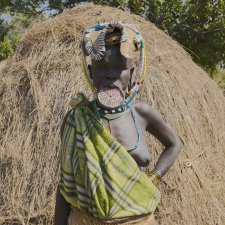
The Ari tribe represent the largest population among all groups of the Omo Valley, living around Jinka. Ari are the farmers and one of the most advanced tribes of the valley. They grow a variety of vegetables, fruits, coffee and herbs like cardamom. Visit some farmers houses and experience daily life, like injera cooking or the black smith’s work. From Jinka, we may alternatively visit the Mursi tribe, an ethnic group living around west of Jinka. The Mursi have a rich cultural heritage and they are most well-known by the outside world for their practice of ceremonial stick fighting and the large pottery discs (‘debhinya’) which are worn by Mursi women in their lower lips. It is not always advisable to visit the Mursi, because it is difficult to really get in touch with the people. We will help you planning which tribes to visit.
Day 9 - Drive to Unesco Konso
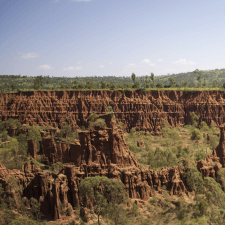
Visiting the Omo Valley, you always pass Konso twice. This is the first place in Ethiopia recognised as a ‘cultural landscape’ by UNESCO. The Konso are a resourceful, efficient, charming, careful, and hard-working people. They have always fiercely defended their territory. This is evident in the fact that each village is walled. They are famous for their wooden anthropomorph statuettes, erected in honor of important - deceased - people. In the Konso language these statuettes are called Waga. You’ll have a chance to walk around the fortress like villages (‘kantas’) with their uniquely designed stone-walled walkways, thatched huts and terraced farms. Konso is also known for its natural phenomenon "New York" - interesting pinnacles of red earth, reminiscent of city skyscrapers with a legendary tale.
Day 10 - Rift Valley & Yirgalem Coffee
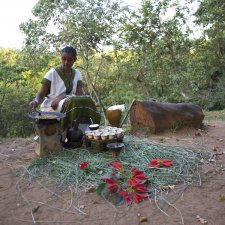
Through the Rift Valley you drive to Hawassa via Yirgalem in the Sidama region, one of the important coffee regions in Ethiopia. During your drive up to Yirgalem you will notice the first few coffee plantations. When you arrive in Yirgalem you will visit one of those fairtrade coffee plantations, so that you can experience first-hand how the Yirgechefe and the Sidama coffee is being made. Furthermore, Ethiopia is well-known about its high quality arabica coffee beans. Here you can see how coffee is being made in a fair way.
Day 11 - Visit Awassa
Hawassa, a friendly and lively city on the shores of Lake Hawassa. Hawassa is a large university city with plenty of hotels, restaurants and cosy cafes to enjoy. s. From Hawassa is a wonderful place to stop for relaxation in southern Ethiopia with lots of nearby daytrips to forests, lakes and coffee farms. It is interesting for nature and wildlife lovers; you can take a boat trip tospot hippos and many bird species on the lake andvisit a local fish market and sample the fresh catch of the day.
Day 12 - Drive to Awash National Park
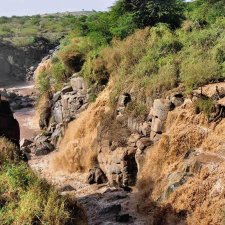
Continuing our adventure in the East, we reach Awash National Park which covers 827 sq km of acacia grassland with volcanic landscapes located along the Awash river. The park spans from the north-eastern corner of Oromia to the southern tip of the Afar region.
Day 13 - To Unesco city of Harar
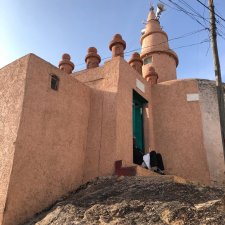
Located at an altitude of 1,855m, with 386 alleyways crammed into just 1sq m, is the unique and vibrant, ancient stone-walled city of Harar. The lively World Heritage listed city has been the capital of the Harari region for thousands of years and is stepped in history and charm.
Once an independent city-state, Harar served as an important political, commercial and cultural crossroads between Africa, India and the Middle East. During the middle ages, it became a centre for Islamic culture, sometimes referred to as ‘the fourth holiest city in Islam’, you can find a total of 82 tiny mosques which date from
the 10th century within the city,
When Emperor Menelik II conquered the city in 1887, Harar was assimilated into Ethiopia. Today, the city is a melting pot of different ethnic groups such as Somalis, Oromo, Arabs and Turks.
Day 14 - Food & Citytour in Harar
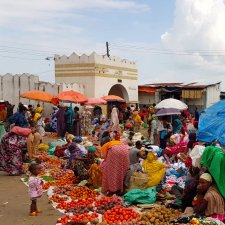
Harar is a fascinating place to explore on foot. On a guided city & food tour, we’ll wander through the narrow alleys of Harar’s old town, stopping off to visit some of the original Harari houses with walls covered in handicrafts. We also go to mosques, shrines and tombs of important Islamic leaders, the Harar cultural center, Rimbaud’s house and Ras Tafari’s house. Along the journey, we’ll visit some of Harar’s best fresh markets and stop-off for authentic local cuisine and coffee in cosy restaurants. In the evening, on the outskirts of the city, we’ll have the chance to attend a night show of hyena feeding. The daily ritual which involves feeding sticks of raw meat to wild hyenas by hand is deeply embedded in the traditions and beliefs of the local people, said to acquire good luck and discourage the wild predators from attacking.
Day 15 - Babile Camel Market
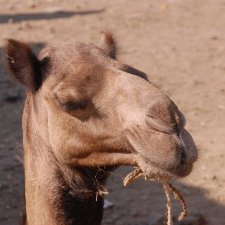
In the morning, we set-off on a beautiful drive to Babile around 35km east of Harar on the way to Jijiga. The small town is mostly inhabited by Somali people and known for its mineral water, elephant sanctuary and for hosting one of Ethiopia’s biggest livestock markets where traders come from long distances to buy camels, donkeys, goats and cattle. Around 7km from Babille, we’ll stop off at the Dakhata Valley otherwise called ‘the valley of marvels’ due to view its special sculpted rock formations.
Day 16 - Relax in Addis Abeba & back home
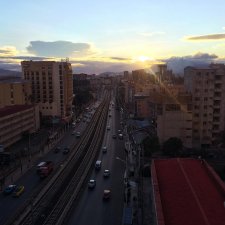
Today we head back to Addis Ababa by plane. You could shop or make a single final visit in the capital in the afternoon. Or you take a rest in your dayroom in Addis Ababa. On the final day you will enjoy a farewell meal and celebration in one of the city’s cultural restaurants. Enjoy the authentic Ethiopian cuisine for the last time, whilst enjoying traditional dance and music.